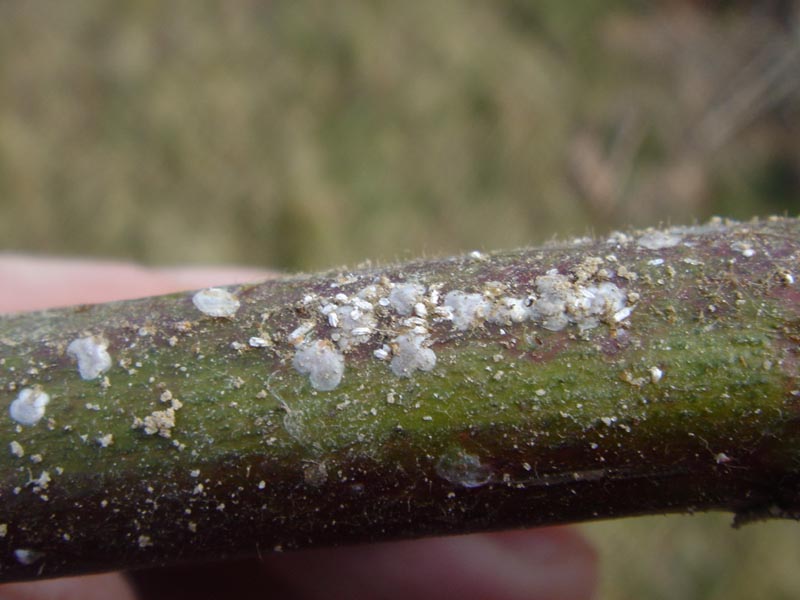 Rose
scale, Aulacaspis
rosae
(Bouché)
Rose
scale, Aulacaspis
rosae
(Bouché)
I. Introduction: This insect has a global distribution,
and is
commonly seen on Rosa and
Rubus. Kosztarab
(1996)
reported that
in "may cause serious damage and death in raspberry, blackberry,
and
roses." The scale cover of the female is white or
greyish-white,
and 1.5-2 mm in diameter. That of the male is much
smaller, and
elliptical (see larger image).
II. Biology: This armored scale overwinters as eggs
beneath the
maternal female's test or covering. There are 1-2
generations in
the northeastern states, with more further south. Eggs hatch in
late
May or June in New York; phenology needs more work in the
southern
states. Crawlers (first instar nymphs) were reported in
Ohio in
mid-late July, and in mid September (Kosztarab 1963).
For control, apply a dormant or horticultural oil to suffocate
overwintering populations. Spray when temperatures are
above 50
degrees F. If insecticides are needed, apply when crawlers
are
active, in early and mid June, and in mid-August.
See
Virginia Tech factsheet
for more information and control timing.
References:
Kosztarab, M. 1963. The armored scale insects of Ohio
(Homoptera:
Coccoidea: Diaspididae). Bull. Ohio Biol Surv. 2(2): 120 p.
Kosztarab, M. 1996. Scale Insects of
Northeastern
North America: Identification, Biology, and Distribution. Va.
Mus. Nat.
Hist. Special Publ. 650 p.